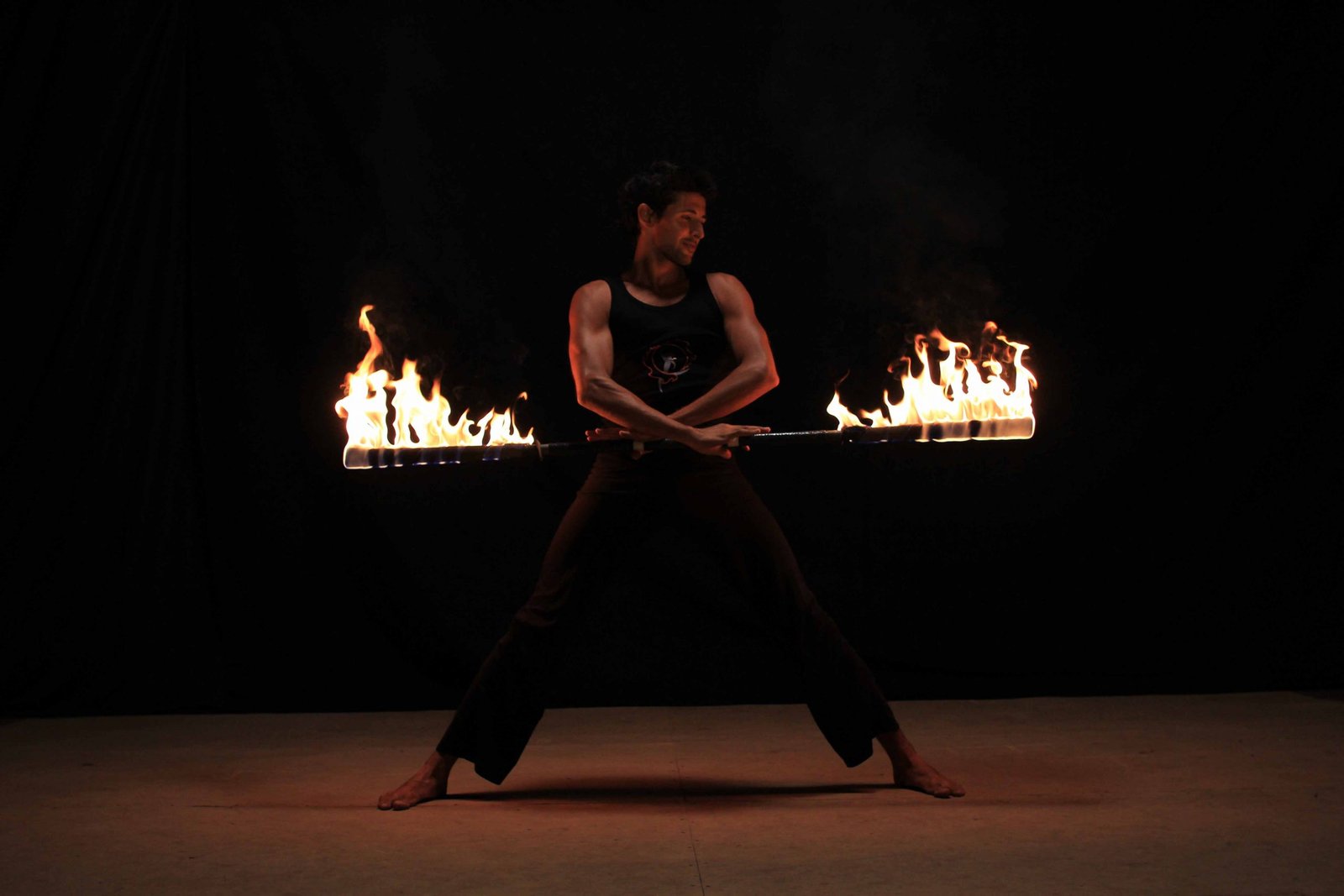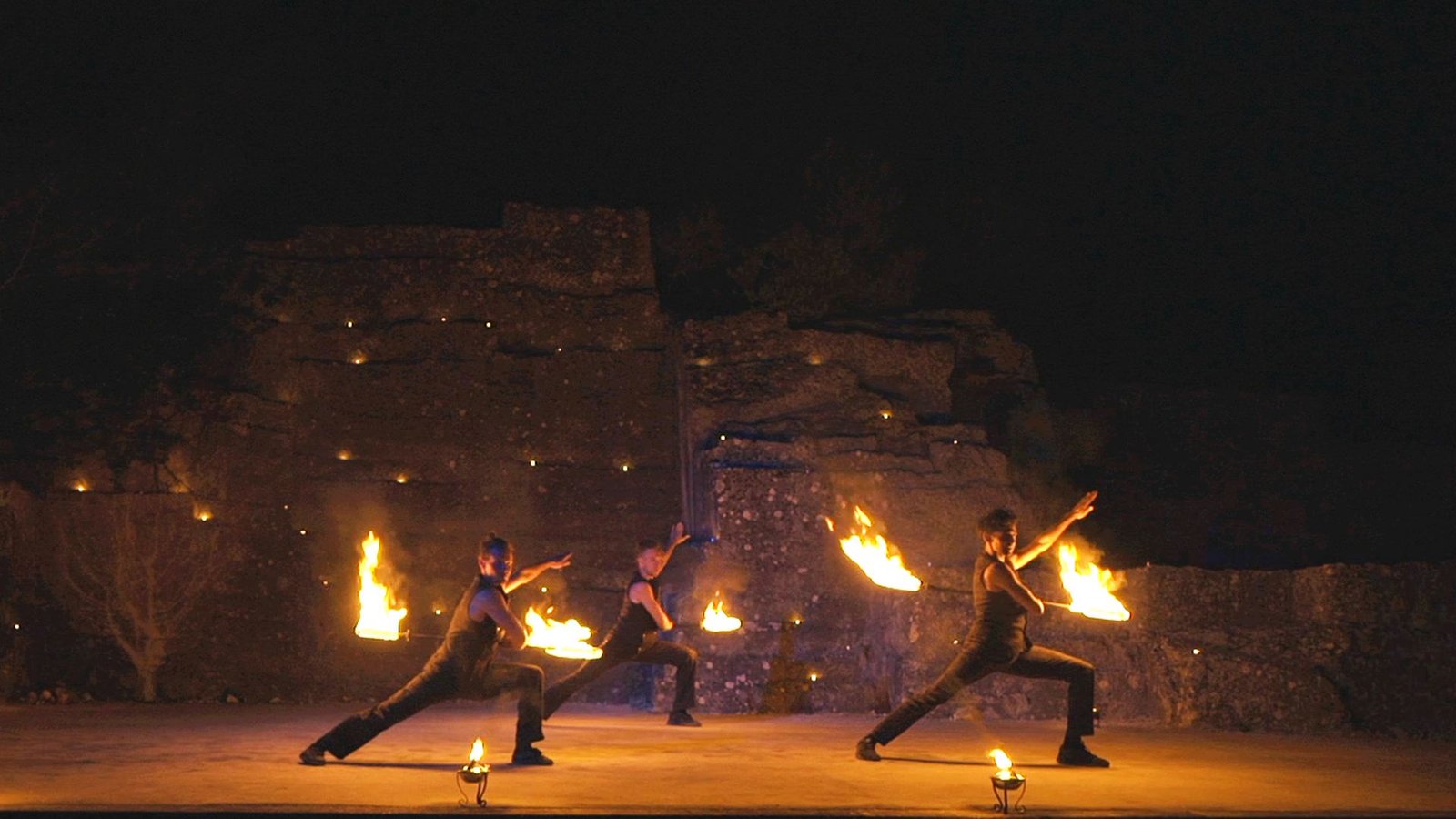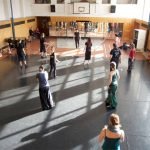Choosing the right fire staff dimensions which will feel right & allow you to pursue your own personal style of fire dancing can be daunting. There are many variables to consider including length, weight & weight distribution. It may be helpful to seek the advise of an experienced artist.
I’ve made a career of dancing with the fire staff (20+ years including 3 years onstage with the Cirque du Soleil). I’ve always designed & constructed my own fire tools and have been teaching poi, staff & swords for over 15 years. Questions about ideal staff specs have come up often from my Students but since I launched Fusion Arts Pro Fire Shop, (offering my custom-made fire staffs to the public for the first time) the questions aren’t just trickling in, they’re pouring in.
Below you will find my revelations regarding fire staff specs over years of impassioned obsession and design modification. Disclaimer! Opinions vary even between professional fire dancers. This is largely due to the different styles of staff spinning. I’ve named the style I’ve developed dance-based fire dance, which I teach in my instructional video series Dancing with the Fire Staff & at my annual Workshops and Fire Dance Retreats.
Choosing Fire Staff Length
At the age of 9, I learned an Indian Martial Arts style of staff spinning. In this tradition, appropriate staff length is eye-level. Following suit, I spun with staffs (both single and double) at my eye level (162cm/5’4”) for 10+ years (from age 19-30). When I quit the Cirque du Soleil and began freelancing, it became impractical to fly with long staffs as many airlines charge an additional fee for baggage over 150cm.
Currently I recommend a staff length at armpit level for those pursuing my dance-based style of fire dance. Because arm-length varies from person to person, it may be more accurate to measure from wrist to wrist when your arms are stretched out in a T.
At this length, you will need to arch back or tilt your plane a bit in order to spin in the internal plane or do isolations. This doesn’t bother me as

FIRE DANCE RETREATS
INSTRUCTIONAL VIDEO SERIES

Learn to fire dance with ex Cirque du Soleil Fire Dancer Srikanta Barefoot. Over 165 minutes of video! Instruction, inspiration and fun! Learn More…
5% DISCOUNT ON PYROTERRA LIGHTTOYS:

We highly recommend Lighttoys LED Props & Visual Poi. For a 5% discount, visit the Lighttoys website & use our lighttoys promo code: fusionartsandlighttoysrullezz
France Fire Dance Retreat! Join us!!!
APRIL 14-20 2024
POI, STAFF & DANCE-BASED FIRE DANCE
Choosing Fire Staff Weight & Weight Distribution
For my style of dance with the fire staff a light weight staff is ideal. That’s because I’m spinning fast, jumping, turning and stopping/ changing the direction of the staff to bring variance to my routine. Because I want to spin a long staff, with as much fire on the ends as possible, strength to weight ratio is of primary importance, which is why I use only the highest-grade titanium tubes to build my pro fire staffs. In fact, I’ve gone to great lengths to research and source light-weight materials, ultimately resorting to the aerospace industry for parts!
My pro fire staffs weigh between 500-750 grams and I wouldn’t want them any heavier. Thanks to the light weight tubing, the majority of the weight is on the ends (in the wick and fuel). This weight distribution helps the staff to stay in plane (think poi). Generating momentum is easy and a matter of giving the ends small pushes and tugs (again like poi).
Contact staffs are often weighted differently because learning the technique works best with staffs which maintain their momentum once in motion. For this reason, many beginner contact staff spinners generally prefer a heavier staff which is weighed more evenly throughout. For this group, the heavier the better and fixing a wooden dowel within the metal tubing is a common design. However, beyond the beginner phase of contact staff, a lighter staff is preferable as less of an impulse is needed to change planes/ directions. Pro contact staff spinners have raved about my pro fire staffs because of how lightweight and straight they are (providing a perfect role).

While contact staffers may be happy to adopt my light-weight fire staffs once they’ve improved their control, put a contact staff in my hands and 90% of the techniques I use with my staffs will be difficult if not impossible to do. The weight distribution is so different! I’ve had students with heavy contact staffs at my workshops and retreats. They struggle with learning my techniques as foundational things like changing directions and staying in plane are so much more difficult with a staff which is heavy or evenly weighted throughout.
What are my personal fire staff specs?
I use the same length of fire staff for both single staff and double staff. Up until 2016 I was using 25,4mm (1″) x 142cm (4’8″) tubes. My isis wicks made of 6mm rope were 22cm in length.
But in 2016 we created a 4 person Fire Dance Act with 3 Female Artists. As the 19mm (.75″) tubing is preferable for those with smaller hands I decided to adapt and allow us all to use the same staffs during the act. Because their arm spans are shorter than mine, we’ve reduced our staff length by 2cm but to maintain the same amount of fire and weight distribution we added 1cm of wick to each end so that now we are using 19mm x 140cm tubing with 23cm of 6mm rope.
It took some getting used to at first but now there is no going back! The thinner diameter tubing makes controlling the staff easier. I am able to spin faster with less effort and with greater enjoyment.
What will be the best fire staff for you?
By now you have an idea about the elements to consider to create the ideal fire staff. Before ordering your pro fire staff, have a peak at our past product specs on facebook. This can give you an idea of what total weight you can achieve by playing with the different elements. And if you still have questions, send me a message!
Thanks for reading! Feel free to check out our instructional videos or join us at our next Fire Dance Retreat for an immersion in dance-based fire dance!
Srikanta Barefoot










